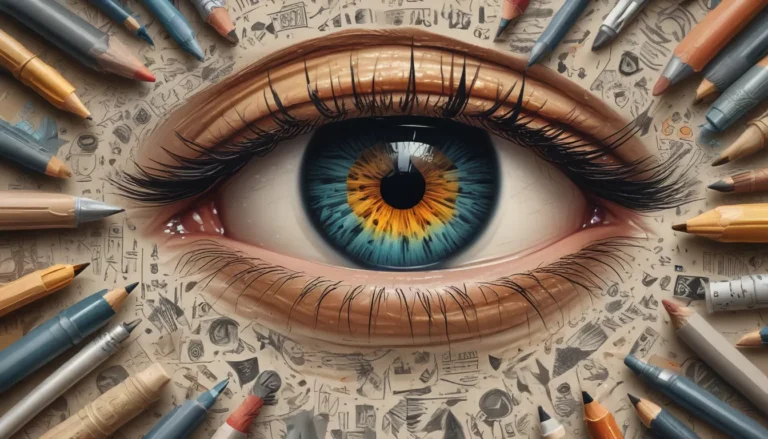A Note About Images: The images used in our articles are for illustration purposes only and may not exactly match the content. They are meant to engage readers, but the text should be relied upon for accurate information.
In today’s fast-paced technological landscape, Deepfake AI emerges as a revolutionary yet controversial innovation. This cutting-edge technology utilizes artificial intelligence to craft hyper-realistic videos and audio recordings, offering entertainment, education, and unfortunately, deception. Understanding Deepfake AI becomes imperative as it seamlessly blurs the lines between reality and fiction, shaping our digital future. Whether you’re a tech enthusiast, a skeptic, or simply curious, delving into the realm of Deepfake AI unveils a myriad of intriguing facts that shed light on its capabilities, the underlying technology, ethical considerations, and its impact on society.
Unraveling the Enigma of Deepfake AI
Deepfake AI involves synthetic media where a person’s likeness or voice is replaced with another, creating the illusion of them saying or doing things they never actually did. Powered by robust algorithms and machine learning techniques, this technology generates convincingly realistic videos and audio recordings.
- Initially popular for creating lifelike celebrity videos, Deepfake technology has expanded its reach, prompting ethical and legal concerns.
Decoding the Mechanics of Deepfake AI
At its essence, deepfake AI harnesses deep learning, a form of machine learning that trains a computer model to recognize and replicate patterns. This intricate process entails feeding vast data into neural networks, allowing the system to learn and refine itself over time.
- The creation of deepfakes involves two primary models: one generates fake images or videos, while the other detects discrepancies to enhance realism. 2. The increasing accessibility of open-source software has enabled individuals with moderate technical skills to craft deepfakes.
Navigating the Impact of Deepfake AI on Society
While Deepfake AI offers avenues for entertainment and education, its propensity for misuse raises profound concerns.
- Deepfakes have been utilized to propagate fake news, manipulate stock markets, and sway elections through misinformation. 2. On an individual level, deepfakes pose privacy threats and can be exploited for non-consensual pornography and character defamation. 3. Despite these challenges, Deepfake AI presents positive applications in de-aging actors in the film industry and enhancing user experiences in virtual reality environments.
Bridging Legal and Ethical Considerations
The emergence of Deepfake technology has spurred calls for regulatory frameworks to mitigate risks while fostering innovation.
- Currently, no universal legislation specifically targets deepfakes, resulting in varied laws across jurisdictions. 2. Ethically, the use of Deepfake AI sparks debates on consent, truth in media, and potential harm, underscoring the necessity for responsible guidelines.
Glimpsing into the Future of Deepfake AI
With advancing technology, the creation of more convincing deepfakes poses challenges in distinguishing between real and synthetic media.
- Experts foresee deepfakes becoming indistinguishable from genuine footage soon, necessitating sophisticated detection methods. 2. Innovations in digital watermarking and blockchain technology are explored as solutions to authenticate digital media. 3. Education and awareness campaigns are pivotal in aiding individuals in discerning real from fake content, promoting critical thinking in the digital era.
Illuminating Deepfake Detection Techniques
Efforts to combat Deepfake technology have spurred the development of detection tools that analyze videos for imperceptible inconsistencies.
- These tools focus on anomalies in facial expressions, blinking patterns, and lip movements unnoticed by Deepfake algorithms. 2. Machine learning models are trained to identify subtle signs of deepfakes, with some platforms implementing detection systems to flag potentially fake content. 3. Despite progress in detection technology, the rapid evolution of deepfake creation tools necessitates continuous advancements in detection methods.
Harnessing AI to Combat Deepfakes
Ironically, AI plays a pivotal role in countering deepfakes, as researchers leverage machine learning to develop effective detection systems.
- AI-driven approaches efficiently analyze vast datasets, identifying deepfakes at scale. 2. Collaborative efforts among tech companies, academic institutions, and governments are essential in evolving AI solutions to combat the dynamic deepfake landscape. 3. Public-private partnerships are forming to share knowledge and resources, aiming to outpace malicious actors in the deepfake realm.
Embracing the Fascination of Deepfake AI
Deepfake AI technology sparks intrigue and curiosity with its unmatched ability to craft hyper-realistic content. Delving into the intricacies and impacts of this technology empowers individuals to navigate the evolving digital landscape with awareness and caution. Vigilance, education, and advocacy for responsible use of Deepfake AI are crucial as we embark on this groundbreaking journey together. Let’s stay informed, stay vigilant, and collaborate to shape a future where authenticity prevails in the age of advanced technology.
Wrapping Up
As we explore the realm of Deepfake AI, each fact and insight shared underscores our commitment to providing credible and engaging content. Trust in our dedication to delivering accurate, diverse perspectives as you journey through the vast landscapes of technology and innovation. Stay informed, stay curious, and join us in unraveling the wonders of Deepfake AI—one fact at a time.






